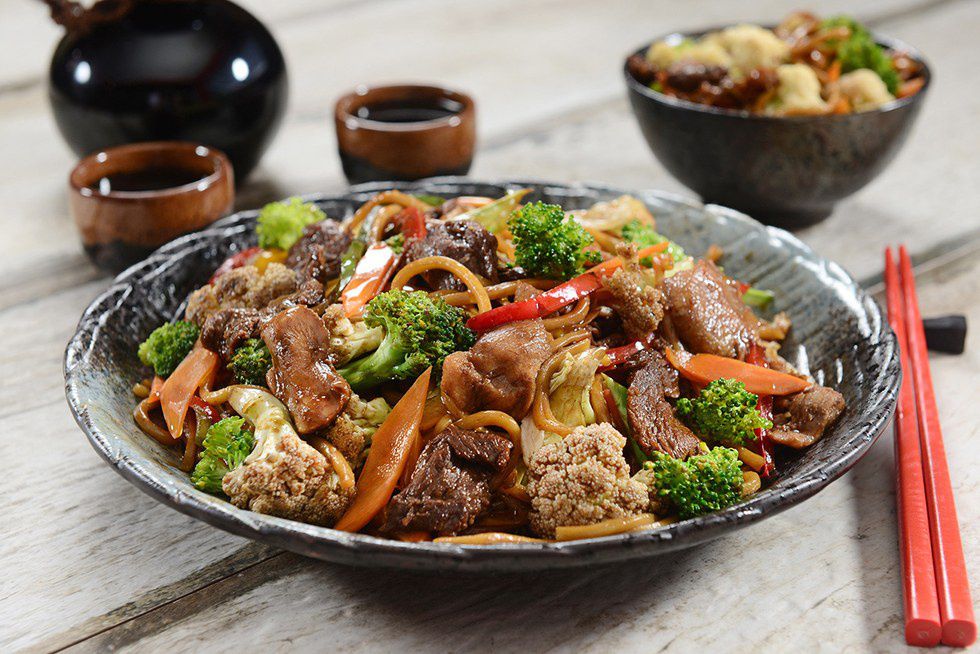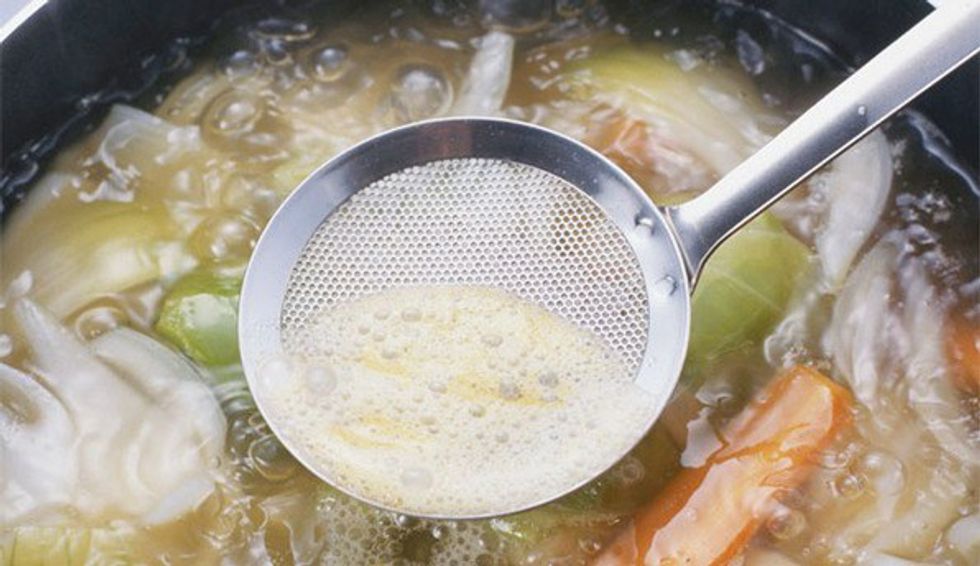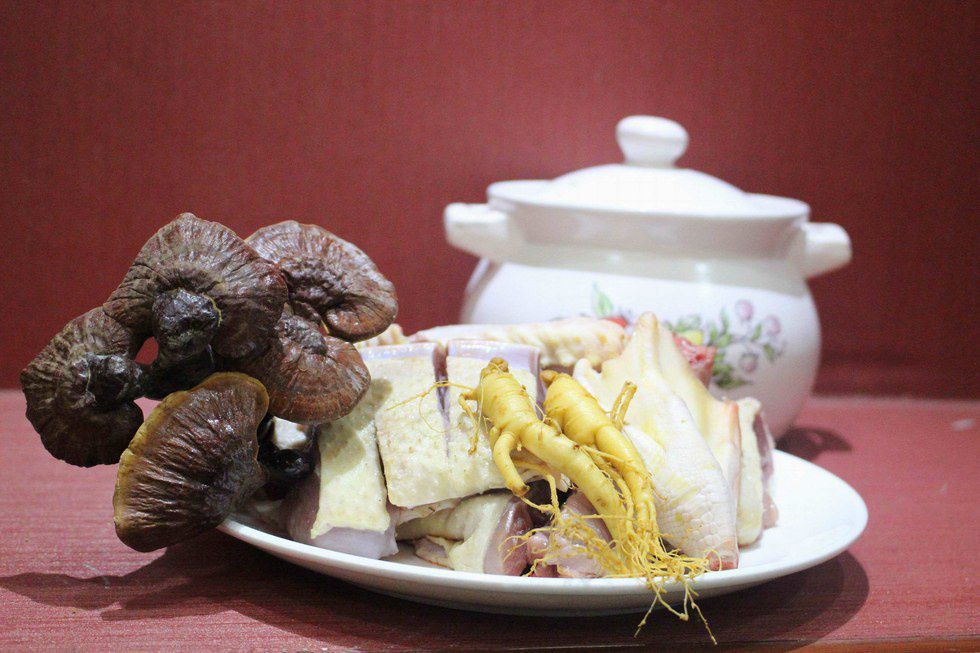Existing for more than 5000 years, Chinese cuisine has mixed within Chinese people’s intelligence and life experiences, historic legacies, spiritual beliefs, ethnic characteristics, and so much more. Developed in a territory of vast geographical diversities, Chinese cuisine is an integration of ingredients grown in various terrains ranging from the mountains, the ocean, and the prairies to the plains and high plains. Growing up as a Chinese girl, I can’t be more proud of the food culture of my nation. I certainly take pride in its diverse and vibrant flavors, but what I appreciate more is the one essence of Chinese culture lying behind each dish—our ultimate care for health.
My American friends always ask me why Chinese girls on campus are generally thinner than other nationalities. They reach to the conclusion that this is a genetic advantage, but I beg to differ.
Chinese people are not only thinner. Longevity, youth preservation etc. are all included in this generalization.
Apparently, we somehow know how to take care of our body, but “hitting the gym” and “going gluten-free” are not historically engraved in our culture—this fancy stuff never came to our ancestors’ mind. However, eating smartly did.
Take a careful look at how Chinese people deal with their food, one can easily see why.
Ingredients:
Certain ingredients that are extensively incorporated in Chinese cuisine are little used in other parts of the world. Animal organs, for example, are one key ingredient in Chinese cuisine. They are highly nutritious and each has a unique texture. If done correctly, their rich flavors can be amazing. Unlike most red meat, they are generally low in fat and extremely high in protein and vitamins. Pork liver, for example, contains a large amount of vitamin D that one can hardly find in other food.
There aremore variations of root vegetablesin Chinese cuisinethan those in other cuisines. Purple potatoes, kudzu vine, yam bean and of course, sweet potatoes, take up a huge portion in the field of Chinese staple food. As more and more people have realized nowadays, root vegetables are significantly healthier for injecting carbs than white bread or sugar based staple food.
However, some of the most popular ingredients are, on the contrary, downplayed in Chinese cuisine. Diary, for instance, is not Chinese people’s strong suit. Despite that, the Mongolian nomads drink sheep milk, and in some regions, people use lard in cooking. Chinese peasants, throughout history, have developed not made many dairy products. There is neither cheese nor butter used in Chinese dishes. Therefore, little saturated fat is contained in most Chinese dishes.
Processing the ingredients:
One thing Chinese people do before cooking meat, especially for stews, is to pre-boil the meat in plain water and force out the remaining gore and extra fat. Processing meat, to Chinese people, is not only cleaning the outside but also cleaning the inside.
Ways of cooking:
Four major ways of cooking are known by the outside world—steaming, stir-frying, boiling and pan-frying, but there are a ton more. However, just these few major ways of cooking reveal how healthy Chinese food is. Steaming and Boiling are two ways that preserve the ingredients’ purest original flavors, and usually, little oil is needed. For stir-fried and pan-fried Chinese dishes, vegetable oil and peanut oil are generally used—they especially give the dish a shiny coloring and also, unlike butter, there’s no heavy milky taste that covers the ingredients’ own fresh flavor.
Take the nature into consideration knowing “when” and “where” to eat “what”:
Everyone knows that Chinese people respect “Yin” and “Yang”, the bi-polarity of nature. It is believed that human bodies possess these double essences, and so does food.
Based on this concept, for the Chinese, one of the major goals of eating is balancing within their bodies the “Yin” and the “Yang” and hence nourishing their physical well-beings.
During winter, people eat lamb stew because the combination of lamb and stewing is extra “Yang” which brings heat that people need for getting through winter.
Ginger is a necessary spice for Chinese seafood dishes, because seafood, having been living under water for their whole life, are extra “Yin” so they need ginger, which is “Yang”, to balance the coldness that cannot be eliminated simply by getting them cooked.
In the Chinese lunar calendar, there mark 24 days that indicates the climates’ change in a year. Specific food should be made or eaten on these days, preventing the potential harm to the human body from to these climate changes.
Medicinal cuisine:
A wide branch of Chinese food culture is derived from ancient Chinese palace dishes. Back in the imperial ages, the Chinese emperors consider their longevity the top priority of the whole country for, as “god’s chosen son”, they were meant to live long hence rule long. The emperors’ private chefs, for satisfying their master, went out of their ways to find adequate herbal medicines and tonic cuisine.
As time goes by, those recipes were recorded in historical literature and this way of cooking with herbal medicines passed down from generation to generation. They not only have amazing flavors but are an elevated, more luxurious version of Chinese cuisine as well.
There are so many more examples. Health plays the most crucial role in Chinese cuisine and, having been polished for over 5000 years, it has incorporated our ancestors' wisdom within itself. There are no advanced processing technologies involved while cooking, but in fact, there are none needed.






















